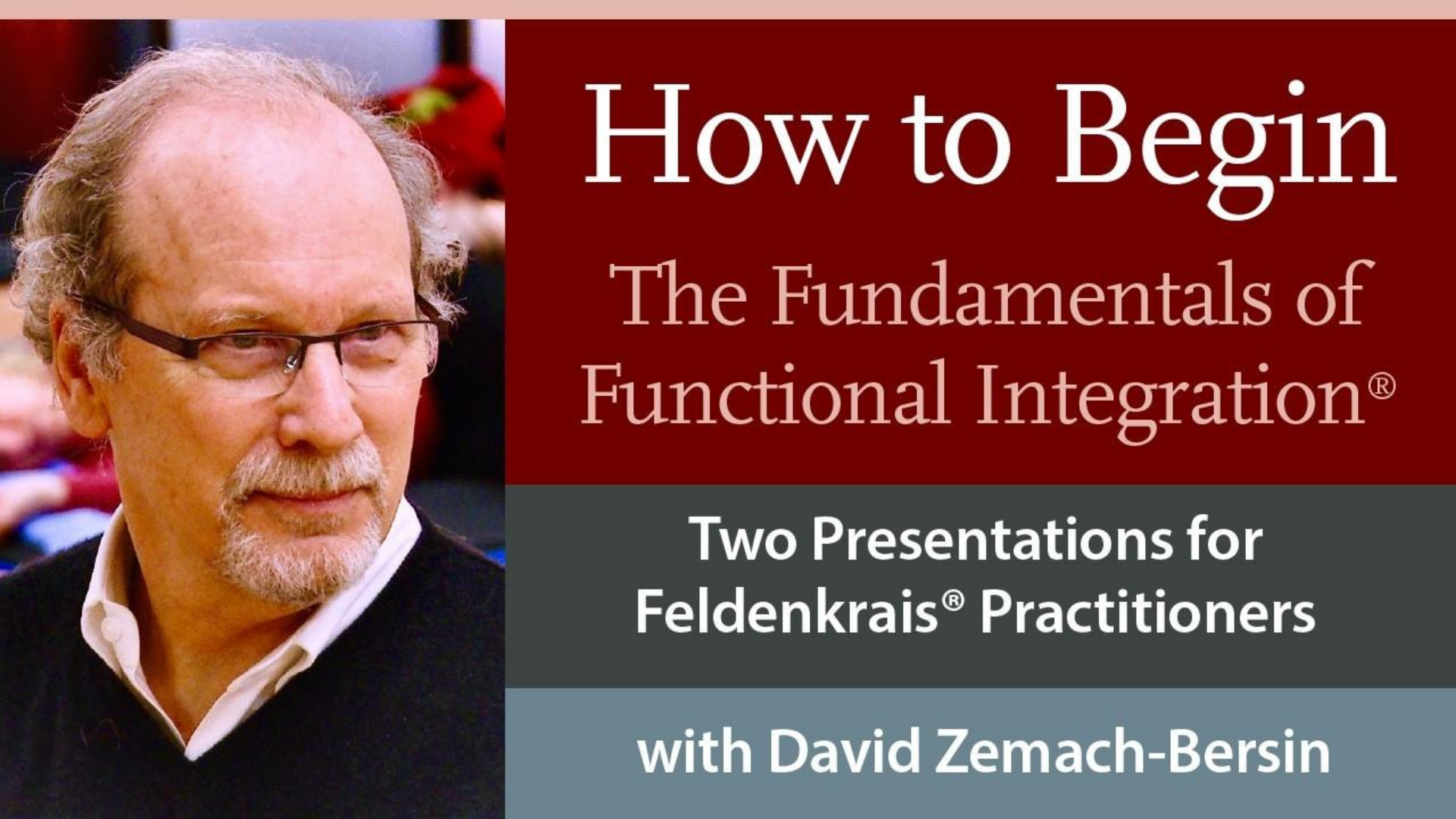
“No one understands Functional Integration better than David Zemach-Bersin. David has incredible mastery of both the creative spirit and technique of Functional Integration.”
– Mark Reese, Ph.D.
Here are two inspiring presentations for Feldenkrais Practitioners by David Zemach-Bersin. They are both relevant to the beginning of a successful Functional Integration lesson, and will nurture those who would like to develop their Functional Integration understanding and skills.
Part I: Beginning at the Beginning
The Functional Integration Interview
This presentation explores the unique characteristics and potency of the Functional Integration Interview, and reveals its important role as part of the first Functional Integration lesson. David Zemach-Bersin shares his approach to the interview with clarity and specificity. You’ll be able to use these inspiring perspectives in your work, right away.
The presentation includes:
- How to be a Feldenkrais 'detective,' gathering clues.
- How to obtain a complete natural history.
- How to avoid viewing your student as a person with a pathology, or problem.
- How to create an environment in which your student can have positive thoughts and sense their innate capacity for improvement.
- How to make categorical and linguistic choices to support healing and improvement.
- How to use the quality of your attention, interest, and orientation, and the specificity of your questions, doubt, openness, curiosity and optimism, to educate.
Part II: The Art of Invalidation
Applying the Scientific Method in Functional Integration
In this presentation, David Zemach-Bersin brings clarity to the inside-game of Functional Integration as he presents an approach formulated by Dr. Feldenkrais, to help you gather -and use- information in Functional Integration.
This presentation includes:
- How to develop yourself as a neutral measuring instrument.
- How to alternate between inductive and deductive reasoning in order to develop an understanding of your student’s fundamental action patterns.
- How to utilize your student's patterns and recognize opportunities for functional connection and new options for action.
- How to produce a difference which your student can sense clearly.
- How to discern the relationship between a person’s bias and their symptoms.
- How to feel the student's biases in multiple planes of action.
- How -and why-to test your inferences and invalidate your assumptions.
- How to not contradict your student's nervous system.
- How to create a lesson in which the student will not feel their disorganization.
3.5+ hour program includes:
- Two presentations
- Lifetime access to the program
- Option to download videos
Payment Options

About David
Senior Feldenkrais Trainer David Zemach-Bersin met Dr. Moshe Feldenkrais in 1973 and studied with him for over ten years in the U.S., England, and Israel. He also studied extensively in Israel and the U.S., with Gaby Yaron and Yochanon Rywerant, both of whom graduated from Dr. Feldenkrais' first training program. Other influences on his work have been Yang form Tai Chi, Aikido, meditation, systems biology, and phenomenology. He has maintained a private Functional Integration practice since 1977 and is recognized for his contribution to strengthening Dr. Feldenkrais’s legacy. A graduate of UC Berkeley with two years of post-graduate work in physiological psychology, David has created numerous audio and video programs for both Feldenkrais Practitioners and the general public and is the co-author of Relaxercise (HarperCollins). He is a past President of FGNA, and a co-founder of Feldenkrais Resources and the Feldenkrais Institute of New York. David has directed seventeen Feldenkrais Professional Training Programs and teaches advanced trainings around the globe. Since 2020, he has been teaching primarily online and has worked to synthesize his thinking and the profound benefits of Dr. Feldenkrais' ideas in programs for both Feldenkrais Teachers and the public, most of which can be found at FeldenkraisAccess.com.

